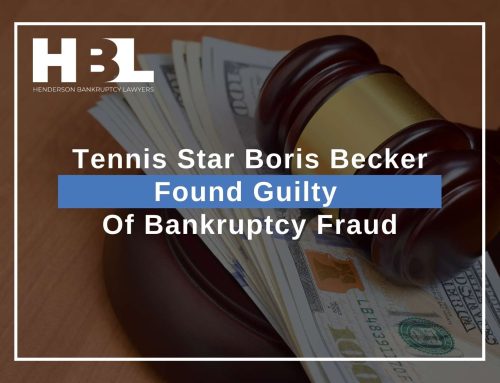The Latest Bankruptcy Victim: The Las Vegas Monorail
 It’s no secret that Las Vegas has been hit especially hard by the economic impact of the coronavirus pandemic. The initial damage was caused when nonessential businesses were forced to close, shutting down most of Nevada’s entertainment and hospitality industries. Tourism to the strip will likely be decreased for years to come due to prolonged unemployment and concerns about contracting COVID-19. While it’s now a part of daily life to turn on the news and see major stores and restaurants filing for bankruptcy, Las Vegas has now seen a more unique filing- the Las Vegas Monorail.
It’s no secret that Las Vegas has been hit especially hard by the economic impact of the coronavirus pandemic. The initial damage was caused when nonessential businesses were forced to close, shutting down most of Nevada’s entertainment and hospitality industries. Tourism to the strip will likely be decreased for years to come due to prolonged unemployment and concerns about contracting COVID-19. While it’s now a part of daily life to turn on the news and see major stores and restaurants filing for bankruptcy, Las Vegas has now seen a more unique filing- the Las Vegas Monorail.
History of the Las Vegas Monorail
While the idea for the monorail was originally conjured in 1993, it wasn’t until 1997 until Nevada allowed for the construction and private ownership of a public Monorail system. Originally meant to be a link between MGM Grand and Bally’s, other investors got involved and construction began in 2000. In 2000, the Las Vegas Monorail Company (LVMC) was formed, with president and CEO Curtis L. Myles III at the helm. The monorail officially opened on July 15, 2004.
The LVMC is unique because it is the only privately owned public transportation system in the United States. Since opening, the monorail has actually helped ease traffic and emissions in Las Vegas. For example, in 2018, the monorail is estimated to have removed more than 2 million driver miles in Nevada, and more than 27 tons of carbon monoxide and other harmful gases being released into the atmosphere.
The Las Vegas Monorail’s Service and Usage
The Las Vegas Monorail runs adjacent to the strip and currently has 7 stations. The track is now more than 4 miles long and was used by more than 4.8 million riders in 2017. The locations for the stations are as follows:
- SAHARA Las Vegas: 2535 S. Las Vegas Blvd., Las Vegas, Nevada 89109
- Westgate: 3000 Paradise Rd., Las Vegas, Nevada 89109
- Convention Center: 3150 Paradise Rd., Las Vegas, Nevada 89109
- Harrah’s & The LINQ: 3535 S. Las Vegas Blvd., Las Vegas, Nevada 89109
- Flamingo & Caesar’s Palace: 3555 S. Las Vegas Blvd., Las Vegas, Nevada 89109
- Bally’s & Paris: 3645 S. Las Vegas Blvd., Las Vegas, Nevada 89109
- MGM Grand: 3799 S. Las Vegas Blvd., Las Vegas, Nevada 89109
Closures due to the Pandemic
On March 18, 2020, the Las Vegas Monorail, along with many other Nevada companies, was required to close due to the coronavirus pandemic. The monorail has yet to reopen, so the bankruptcy filing was approved by LVMC’s board of directors. To offset these losses, the LVMC has decided to sell to the Las Vegas Convention and Visitors Authority. The monorail provided vital transportation for conventions frequently held in Las Vegas before the onset of the pandemic.
So What is Chapter 11 Bankruptcy?

There are a few common paths companies use to emerge from Chapter 11 bankruptcy. Oftentimes, debts to a top creditor will simply be converted into ownership shares. The company may shut down despite being in Chapter 11 because its debts are too vast and complex to discharge in Chapter 7. Another common route out of Chapter 11 is to sell the company. As mentioned above, the bankruptcy filing comes in conjunction with a sale to the Las Vegas Convention and Visitors Authority. The sale, which was for $24.6 million, will ensure that there is still convenient transportation around the Convention Center and downtown Las Vegas area.
Upcoming Expansions
The Las Vegas Convention and Visitors Authority didn’t buy the monorail simply for sympathetic reasons. The Clark County Commission approved the sale on September 1, 2020. This is important because the LVMC previously had a noncompete with Clark County. The Boring Co., a company owned by Elon Musk, has already begun drilling underground tunnels to transport visitors around the Las Vegas Convention Campus. Now with LVMC’s non-compete out of the way, Musks’ company will be able to further expand the tunnel system in Las Vegas. Musk’s concept is for self-driving Tesla vehicles, holding up to 16 passengers, to navigate these underground tunnels.
An additional station was already planned to be added to the monorail at Mandalay Bay before the bankruptcy was filed. This new station will also be within walking distance from the Allegiant Stadium. Wynn Resorts and Genting Groups have already signed contracts to build tunnels that would provide transportation from their hotels to the Convention Center.
The LVCVA has limits on how much it can spend each year on the monorail set by the Clark County Commission. Without approval from the commission, it can’t spend more than 3% of its yearly budget on the monorail. The LVCVA will also be financially responsible for destructing the monorail if it fails. The LVCVA currently has $6.76 million set aside for this purpose. Las Vegas mayor Carolyn Goodman has voiced that she hopes the monorail will eventually be able to expand to McCarran airport and downtown Las Vegas in the future, as originally planned.





